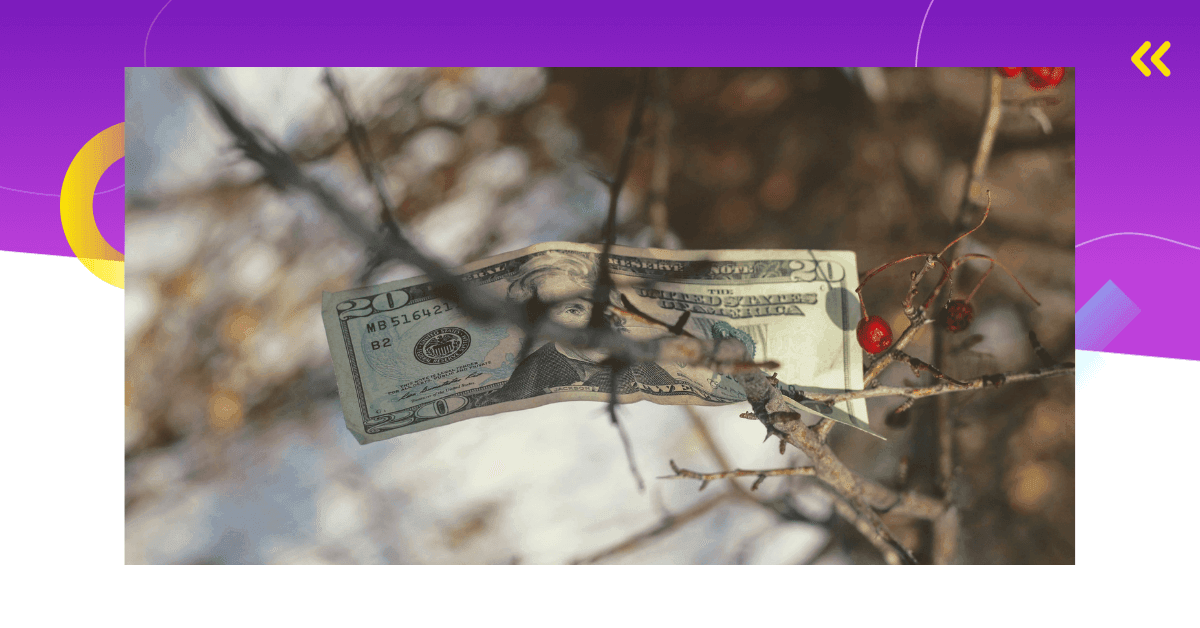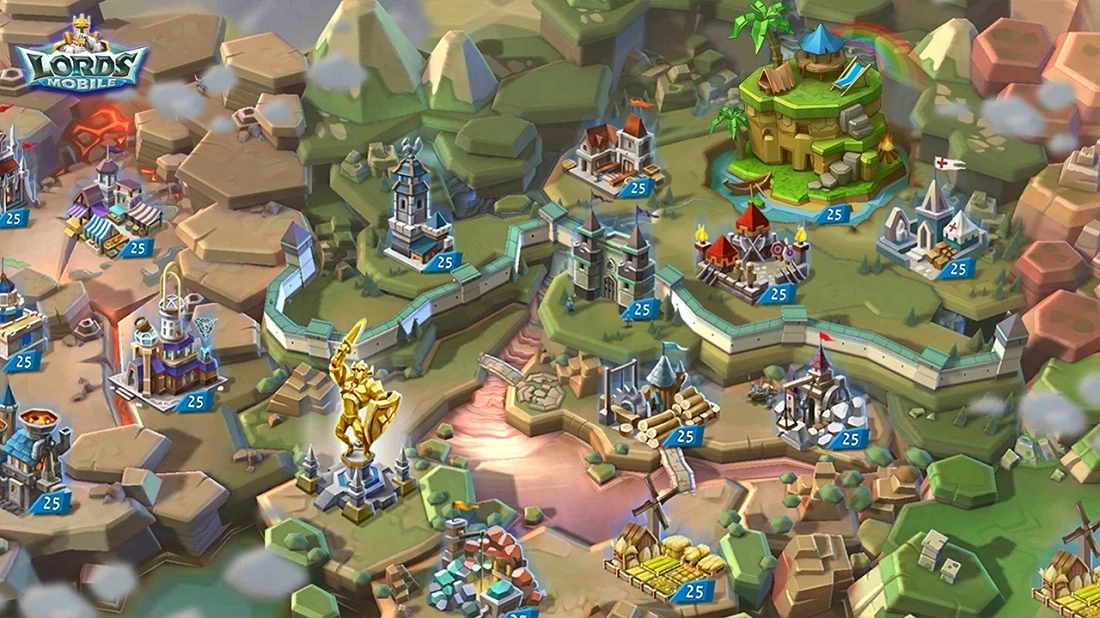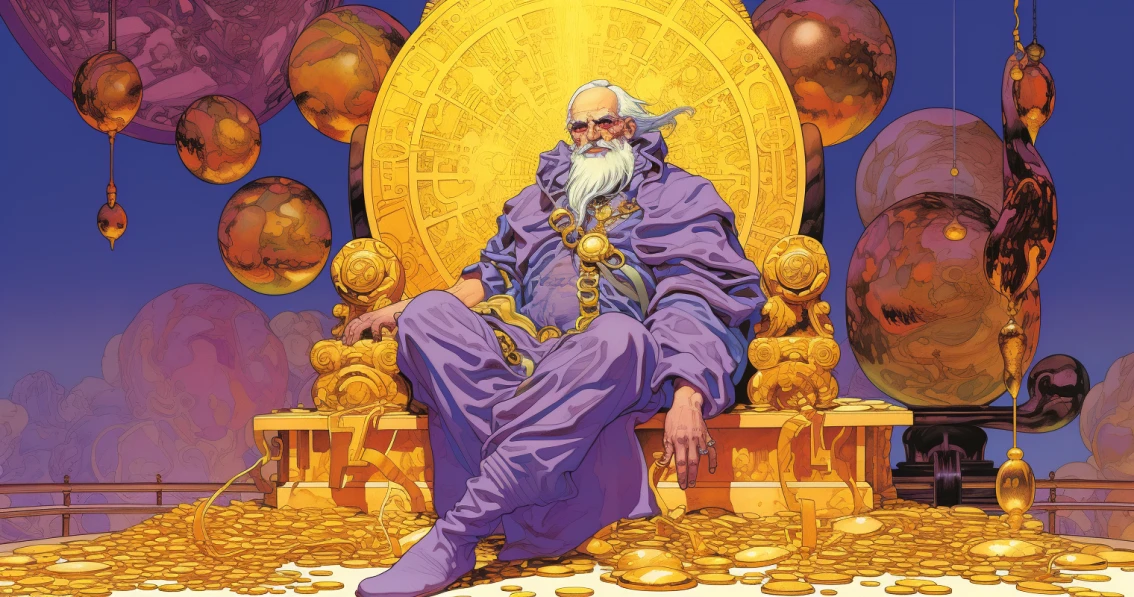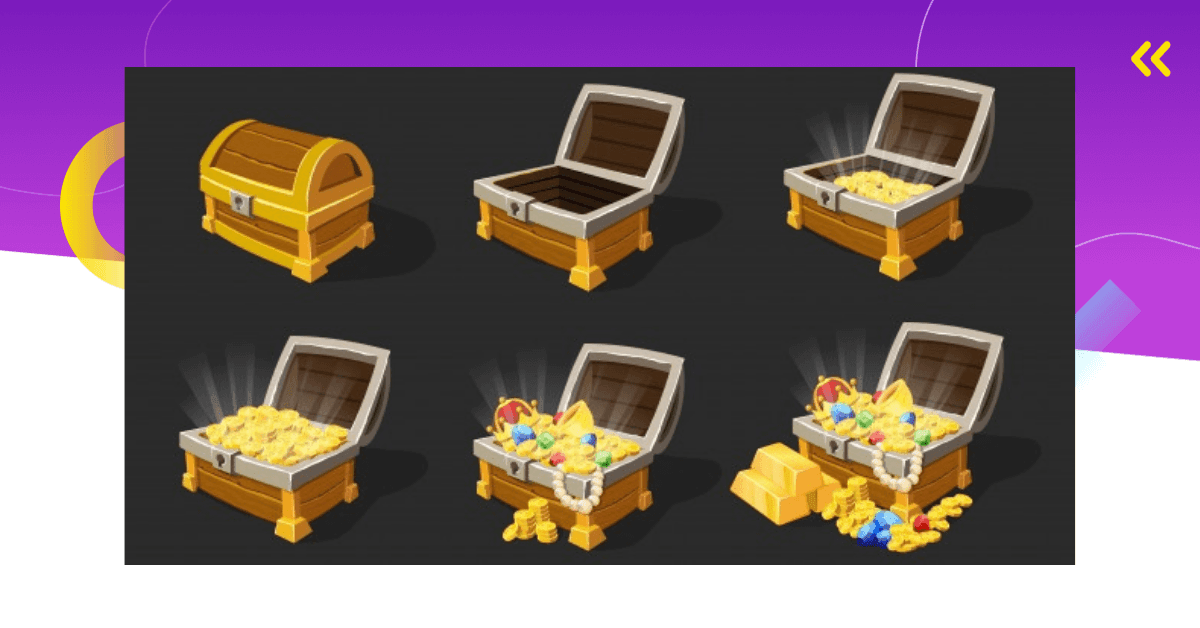You want your players to make in-app purchases, but it’s just not going so well? Players aren’t to be blamed here, the responsibility for in-app purchase offers is all yours. There is a fine chance that you’re making one of these common in-app purchase mistakes.
Here comes the list!
1. Turning Your Game Into a “Pay-to-Win”
If there is one thing players despise, it’s “pay-to-win” games.
These are freemium games where in-app purchases should be optional. But oftentimes, they don’t feel optional at all.
Free-to-play players hate them because they can’t progress without making purchases. Paying players may feel like no matter how much they spend – it’s never enough.
Here are some common pay-to-win scenarios players come across.

Scenario 1: A player started playing a game, played two sessions, and can’t pass level 5 for the next three sessions. Making a purchase results in passing the level with ease.
Scenario 2: A free-to-play player starts playing a multiplayer game and finds out they have no chance against paying players.
Both of these are pretty bad.
It’s one thing to motivate players into making in-app purchases, but it’s a whole different thing to force them into doing it.
In single-player games, developers block players’ progress by creating one level that is way too difficult. This is even worse if it happens too early in the game. At this point, players are probably not that much into the game. For this reason, they are more likely to churn.
In multiplayer games, in-app purchases often affect the gameplay balance too much. The thing is, these games should be mainly skill-based. In-app purchases should only be there to provide minor perks and cosmetic items.
Ultimately, making these mistakes can result in unhappy players as well as extremely bad ratings and reviews.

2. Being Too Aggressive with Offers
Being aggressive is never a good thing. This also goes for in-app purchase offers.
Yes, your offers should be visible. However, many developers mistake this for bombarding players with countless offers.
In order to reach players with offers, developers use pop-ups, in-game messages, and push notifications.
This is where things often go in the wrong direction.
Aggressive offers do not only make players not purchase anything, but also give them a good reason to churn. Or they will just learn to ignore them.
In-app purchase pop-ups are something you need to be especially careful with.
They take over the players’ whole screens, and they are very aware of them. For this reason, there is no need to show IAP pop-ups in every session. Especially not more than once.
Another bad idea is displaying several pop-up offers in a row. This just feels spammy. If players exit the first one, do you really think they will consider the next one? This will hardly happen.
Finally, not every offer you have should come as a pop-up. This is one of the most common in-app purchase mistakes. Reserve pop-ups for your best, most valuable offers. This way, players will be more eager to check them out.

3. Sending out Generic Offers
If you’re sending out identical offers to all players, you’re making a big mistake.
Yes, some players might not notice it. But you will definitely notice it in your revenue numbers.
The thing is, players crave personalization. They want exclusive IAP offers that speak to them. One offer can be a perfect match for one player and completely irrelevant for the other.
When players constantly receive generic offers, they lose interest in them. Even worse – this affects all the future offers they will receive from you, even if you start personalizing. All of this can affect your ARPDAUs and cause more churns.
For this reason, you need to segment your players.
Separate them by their playing styles, in-game behavior, and purchase preferences. This is the first step towards personalizing your offers.
Only when you do this, you can hit them with the right monetization messages. For example, a “Beginner’s Bundle” for a new player, a “Pro Pack” for an engaged player, and a “VIP Pack” for a loyal player.
When players get offers like these, they feel exclusive. Hence, there is a better chance they will open up their wallets.

4. Trying to Sell Too Early
We know – you want to monetize your players ASAP.
This is important, but there is such a thing as too early.
If players don’t enjoy a positive first-time user experience, this can ruin your game. In this phase, you shouldn’t do anything they can perceive as negative or annoying. Don’t block their progress, don’t be stingy with resources, and don’t try to sell.
Instead, let them play the game, reward them and make them feel successful.
Give players time to figure out your game’s economy and enjoy a premium experience. In other words, give them a taste of your in-app purchases. For example, if your game has a premium currency, give out plenty of it.
Simply put, let players get the best out of your game. Put everything else on hold.
Need another reason to delay your offers? Coming right up.
According to DeltaDNA, players who purchase something later on in the game, pay more during their lifetime.
Therefore, make sure to retain players first, and monetize later. It will pay off in the long run.

5. Giving Away Too Much
As I mentioned above, you need to be ready to give your players free stuff early in the game.
However, some developers make the mistake of giving out too much.
This way, you become the enemy of your own monetization. If your in-game rewards are too generous, players won’t be motivated to make in-app purchases.
Here’s how you can tell if your free rewards are putting your IAPs at risk.
Analyze your loyal non-spending players. If these players are always returning for daily rewards and have no reason to make in-app purchases, you need to change something.
Even though giving away a lot can boost your retention rates, don’t forget your main goal – profits.

6. Trying to Get High Individual Payments
Don’t hope that players will spend their daily earnings on your offers.
The chances of this happening are very, very low.
There is nothing wrong with having several high-end offers in your game’s store. Some players may go and buy them.
However, this shouldn’t be your monetization focus. It’s an especially bad idea to have special offers at high price points.
If you presented IAP pop-ups at $50, this would have a lot of negative effects. It doesn’t matter how generous the discount is, most players will laugh it off.
Sure, you want to catch some whales. However, be aware that even whales don’t spend a lot on individual purchases. The average amount whales spend per purchase is about $20 (DeltaDNA).
After all, in most cases, low-priced offers are best-sellers among most top-grossing games.
For example, in Roblox and Candy Crush Saga, the bestsellers are $0.99 offers (Sensor Tower, free data). These games fall into the puzzle and adventure genres. Both of these attract casual players. Therefore, it comes as no surprise that they don’t spend much on individual purchases.
On the other hand, Clash Royale’s bestseller is a $4.99 offer (Sensor Tower, free data). This strategy game attracts mid-core players, so it’s expected for them to spend more. However, this is only a slightly higher-priced offer, not even close to high individual payments.
For this reason, your goal should be to encourage players to spend regularly, not to push one big purchase.
This is one of in-app purchase mistakes you can easily avoid making.

7. Fake or Unattractive Promotions
I’m sure you’re completely aware of the importance of creating sales.
However, they have to be done right.
Here are some of the most common in-app purchase mistakes that appear in promotions:
- Low value for money
- Fake discount tags
- Fake timers
One of the basic rules of promotions is that they have to be valuable. You have to consider the standard offers in your store, and offer players more for less money.
When it comes to new players, your goal is to convince them into making their first purchase. New players should get the best discounts you can offer them. These offers are often even worth 200% more than the regular ones.
I’ve seen numerous fake discount tags in mobile games. This is especially common for bundle offers.
For example, a bundle deal may say it is +150% more value than the regular offers. However, the numbers just don’t add up. These developers think that players will get “lost” in the bundle items and oversee their actual value.
Of course, many will, but a lot of players will figure it out. And they will hold it against them.
Finally, your offers should come with a sense of urgency. But be assured that, if you fake it, the players will figure it out.
Here’s an example of how not to do it.
You’ve decided your offer will come with a 24-hour timer. The players see the offer, think about it, and decide not to purchase it. And on the next day – they see the same offer live for another 24-hour period.
Once this period ends, guess what? Same offer, same timer.
This is not a good idea because it ruins the purpose of timers. When players see this, not only will they not make a purchase, but will look at your future offers differently.

8. Poor In-Game Store Setup
Your in-game store is the center of your in-game economy. You can’t afford to make mistakes here.
The most common in-app purchase mistakes here are offer diversity and offer pricing.
If the offer isn’t diverse, players might not be able to find something that fits their budget. On the other hand, if the offer is too big, they might find it overwhelming.
Most top games we’ve analyzed bring six offers at six different price points. This is an optimal number that covers low, medium, and high spenders.
Another mistake developers make here is in the way they distribute the offers. For example, if the first offer is at $0.99, the second one shouldn’t jump straight to $10.
However, your offer options depend on your game and its genre.
If it falls into the casual category, then you should offer as many low-priced options as possible. Have at least four offers in the <$20 pool. For example, Homescapes has six coin offers – $0.99, $4.99. $9.99, $19.99, $39.99, and $79.99.
If you have a mid-core game, you can aim for slightly higher offer options. For example, Call of Duty: Mobile sets its premium currency prices at $0.99, $4.99, $9.99, $24.99, $49.99, and $99.99.
To find the ideal price points for you, check out what your genre competitors do. And of course, test your price points.

9. Not A/B Testing Your Offers and Price Points
How many times have you thought that you have a great idea but it turned out to be a horrible one?
Assumptions and ideas shouldn’t define your monetization strategy. They should only be your starting points. The only way to find out if they will work is to A/B test them.
Here’s how you do it.
When you’re A/B testing, you should be changing one variable at a time. This is the only way to know exactly which element is affecting your results.
You should start A/B testing early – in the beta test phase. In this phase, you A/B test different in-app purchase ideas and keep the ones that work. This includes your store offers, different special offers, price points, etc.
Later on, A/B testing helps you optimize for the best results. It tells you which features could use improvement, and which should be removed.
Maybe you’ll find out you need to adjust your starter bundle’s price. Or that your battle pass offer isn’t bringing enough rewards. Perhaps you’ll find out you just need different names for some of your offers.

10. Having a Complex Game Economy
Imagine walking into a store with dollars, pounds, and euros. You can use all of them, but you can only buy certain things with a certain currency.
This is how insane in-game economies can get.
Whichever currencies your game includes, keep it as simple as you can.
First of all, don’t have too many currencies. Second, don’t offer too many of them that can be purchased.
Most top games offer two types of currencies: soft and hard currency.
Hard currency is usually the game’s premium currency. This means it is the only currency in the game that can be bought with real money.
With it, players can do almost anything they want in the game. They can usually directly purchase items, but also exchange it for other currencies.
The soft currency has a lower value than the hard currency. Players usually can’t buy it with real money. However, they should get plenty of it when playing or through rewards.
As a rule, simple games should have a simple economy. For example, popular puzzle match-3 games like Homescapes and Gardenscapes only have one currency.
On the other hand, mid and hardcore games can afford to have more complex economies. For example, LoL: Wild Rift has three different currencies. However, only one can be bought with real money.
My point? Adjust your in-game economy to your game’s complexity. However, it’s better to make things simple than to risk going overboard and confusing your players.

11. Bad Offer Timing
If you don’t carefully time your offers, you’re making a rookie mistake.
The worst thing you can do with offers is to throw them at the players randomly.
The best time to make an offer is when players need your assistance. And the only way to know when this happens is to follow your players’ in-game journey.
When they start playing and stumble upon their first obstacles in the game, it’s time for a starter pack offer. Usually, this is a bundle of useful items and premium currency at a low price.
Later on, you should throw them offers at different pain points. In these situations, they should get offered items that help them progress.
If you see your players stuck on a level for some time, don’t just wait and hope they will visit the store. Try presenting them with a discounted, limited-time offer.
As players progress, you can introduce players to completely new offers. For example, you can introduce cosmetic purchases. This is usually something players are not interested in right away. The longer they play, there is more chance they will be interested in such options.
All in all, the key to offer timing is understanding your players’ in-game behavior and their needs.
12. Offers Are Not Valuable Enough
Sometimes your timing, placements, and messages are just right, but you’re still not getting enough purchases. Low-value offers might be the culprit.
Just like you can give away too much, it’s also possible to give too little.
Even if an offer has a low price point, it still needs to bring value to users and be enticing enough for them to make a purchase. Just to illustrate my point, it would be like trying to sell 100 coins, your least valuable currency, for fifty cents.
While this is very cheap, this offer is not attractive enough to players.
This is why bundles work great – they increase the perceived value of an offer while maintaining a reasonable price. Players love them. Just take several game items/boosters/currencies and sell them together.
Another piece of advice when trying to think of offers that will be appealing and valuable to players is to think about their needs at various points of gameplay.
An energy pack that’s not particularly valuable during early gameplay might be a lifesaver at level 20. This is a good example of how timing can also influence the perceived value of an offer.

13. Not Paying Attention to Other Monetization Strategies
Is your game one of many that don’t rely on in-app purchases only?
If your answer is yes, you have even more potential in-app purchase mistakes to look out for.
For example, a lot of games include rewarded video ads into their monetization mix. If this is the case with your game, you have to be extra careful.
These ads bring players rewards. They have to be valuable enough to attract players, but not too valuable. If the rewards are too generous, this can devalue your in-app purchases.
In-app purchases often come with subscription offers, too.
The players that go and purchase these offers are very valuable for your game. For this reason, you shouldn’t make the mistake of bombarding them with countless IAP offers.
Therefore, make sure to adjust your in-app purchases to all other monetization strategies you have in your arsenal.
Wrapping up on In-App Purchase Mistakes
If you’ve never made in-app purchase mistakes, you never developed a game. These mistakes are here to learn from.
However, there is no point in making mistakes you know you can avoid.
If you have any questions or anything to add to this article on in-app purchase mistakes, leave us a comment below!







Comments